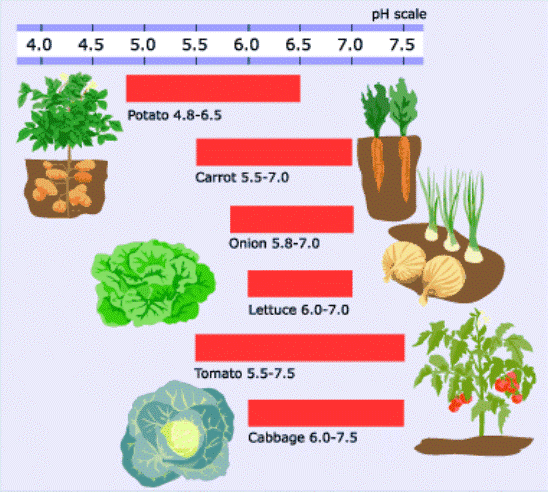Definition – What does Soil pH mean?
Soil pH is an indication of the acidity or alkalinity of soil and is measured in pH units. (Which stands for “potential hydrogen”. The “H” is capitalized because it is the chemical symbol for hydrogen.) The acidity or alkalinity of a soil is measured on a scale from 0 (most acid) to 14 (most alkaline), with 7 being the neutral point. Only the middle range of the scale, from 4 to 8, is of interest to gardeners. Most plants grow best in the slightly acid to neutral range (pH 6.0 to 7.0). Some plants, such as rhododendrons and blueberries, thrive only in strongly acid soil, with a pH range of 4.0 to 5.5.
Why is Soil pH Important?
Soil pH is important because it affects the health of plants. Before a nutrient can be used by plants, it must be dissolved in soil water. Most plant nutrients dissolve when the soil is slightly acidic. Many plants do well at a pH range of about 6 to 7.
Although soil pH influences a number of processes in the soil, it affects plants mainly by decreasing or increasing their ability to absorb nutrients. If the pH is too high or too low, plants may suffer nutrient deficiencies, even if sufficient quantities of the nutrients are present in the soil.
Whether your soil is acid, alkaline, or neutral depends largely on where you live. If you live in a high-rainfall region, your soil is probably acid—below pH 7. If a soil test shows that your soil has become too acidic, you can correct it by adding lime (see Raising pH With Limestone).
Alkaline soils – those above pH 7.0 – are found in areas with low rainfall or where the soil contains large amounts of lime or sodium. Soils in much of the arid western United States are alkaline, as are those in regions where the base rock is limestone. The most effective way to lower the pH is to add soil sulfur (see Lowering pH With Sulfur).
How do you measure the pH of Soil?
Many liquid dyes change color when they come into contact width acids or bases.
You can measure the pH of a soil by saturating the soil with dye for a few minutes and observing the color of the liquid.
Soil pH levels for best growth of common vegetables
